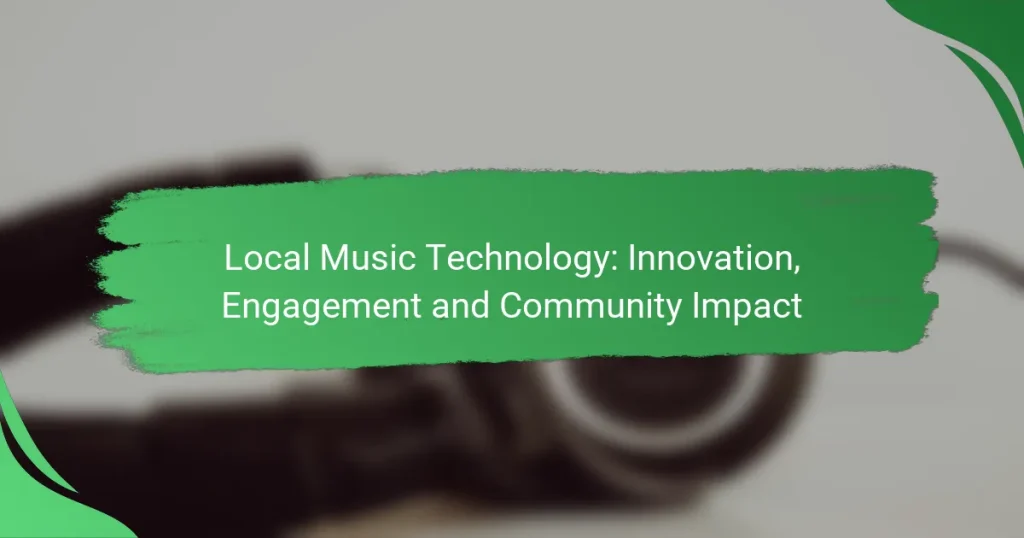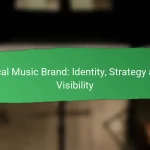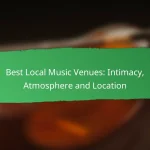Local music technology in Los Angeles is driving innovation and enhancing community engagement by equipping artists with cutting-edge tools that promote creativity and collaboration. This dynamic environment not only supports musicians in producing high-quality music but also fosters inclusive spaces for skill development and connection within the local music scene.
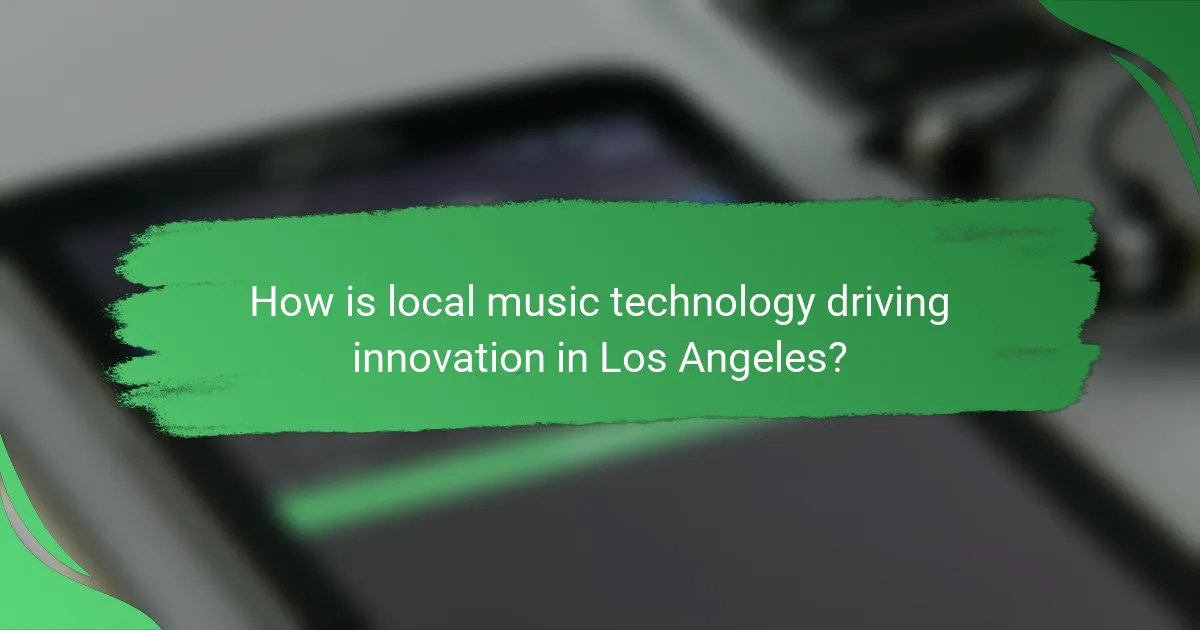
How is local music technology driving innovation in Los Angeles?
Local music technology in Los Angeles is fostering innovation by providing artists with advanced tools and platforms that enhance creativity and collaboration. This vibrant ecosystem supports musicians in producing high-quality music while engaging with their communities in new ways.
Emerging platforms like Soundtrap
Soundtrap is a cloud-based music studio that allows musicians to create and collaborate in real-time, regardless of their location. This platform is particularly popular among Los Angeles artists, as it enables seamless collaboration with fellow musicians, producers, and songwriters.
By offering a user-friendly interface and a range of built-in instruments and loops, Soundtrap empowers users to experiment with different sounds and styles. This accessibility encourages more artists to engage with music technology, fostering a diverse creative community.
Collaborative tools enhancing music production
Collaborative tools such as Splice and BandLab are revolutionizing music production by allowing multiple users to work on projects simultaneously. These platforms offer features like version control and cloud storage, which are essential for managing complex projects in a collaborative environment.
Los Angeles musicians can benefit from these tools by sharing their work with peers for feedback or co-creating tracks without geographical limitations. This collaborative approach not only enhances the quality of music produced but also strengthens community ties among local artists.
Integration of AI in music creation
The integration of artificial intelligence in music creation is transforming how artists compose and produce music. AI tools can analyze trends, suggest chord progressions, and even generate melodies, allowing musicians to explore new creative avenues.
In Los Angeles, artists are increasingly using AI-driven platforms like Amper Music and AIVA to enhance their creative processes. These tools can save time and inspire innovation, but artists should remain mindful of maintaining their unique voice and style amidst the technological advancements.

What are the community engagement strategies in music technology?
Community engagement strategies in music technology focus on fostering collaboration, creativity, and skill development among local artists and enthusiasts. These strategies aim to create inclusive environments where individuals can learn, showcase their talents, and connect with others in the music scene.
Workshops and training programs
Workshops and training programs are essential for building skills in music technology. They often cover topics such as music production, sound engineering, and software usage, catering to various skill levels from beginners to advanced users. Local community centers and music schools frequently host these sessions, making them accessible and affordable.
Participants can expect hands-on experiences, allowing them to apply what they learn in real-time. It’s beneficial to seek out programs that offer follow-up support or networking opportunities to maximize the impact of the training.
Local artist showcases and events
Local artist showcases and events provide platforms for musicians to present their work and connect with audiences. These events can range from open mic nights to larger festivals, often highlighting diverse genres and styles within the community. They serve as vital networking opportunities for artists, producers, and fans alike.
Engaging in these events can help artists gain exposure and receive feedback on their work. Communities should encourage participation by promoting events through social media and local channels to attract larger audiences.
Partnerships with schools and universities
Partnerships with schools and universities enhance community engagement by integrating music technology into educational curricula. These collaborations can lead to specialized programs that teach students about music production, sound design, and the business aspects of the music industry. Such initiatives often include guest lectures from industry professionals and hands-on projects.
Schools can benefit from these partnerships by gaining access to resources and expertise, while students receive valuable insights and practical experience. Establishing clear communication and mutual goals between educational institutions and local music organizations is crucial for successful collaboration.
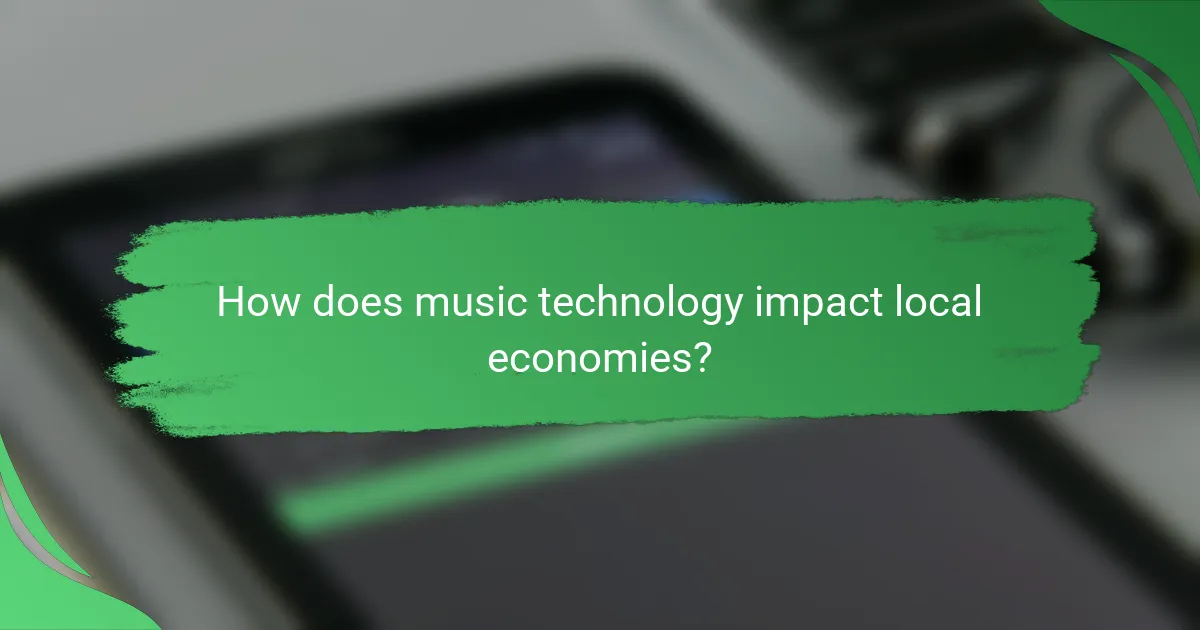
How does music technology impact local economies?
Music technology significantly boosts local economies by creating jobs, enhancing business opportunities, and attracting visitors. The integration of tech in music fosters innovation, leading to economic growth and community engagement.
Job creation in tech and music sectors
The intersection of music and technology generates numerous job opportunities in both sectors. Positions range from software developers and sound engineers to event coordinators and marketing specialists. Local communities can see job growth in the low hundreds to thousands, depending on the scale of music initiatives.
Moreover, educational programs and workshops can further enhance skill development, preparing individuals for careers in these fields. Collaborations between local schools and tech companies can create pathways for students to enter the workforce.
Boosting local businesses through events
Music technology facilitates the organization of events that can significantly benefit local businesses. Concerts, workshops, and festivals often require services from local vendors, including food, merchandise, and accommodations. This creates a ripple effect, increasing sales for nearby shops and restaurants.
Additionally, businesses can leverage music events for marketing opportunities, such as sponsorships or partnerships, enhancing their visibility in the community. Engaging with local artists can also foster a sense of community and loyalty among customers.
Attracting tourism with music festivals
Music festivals powered by technology can draw tourists, boosting local economies. These events often feature diverse lineups and innovative experiences, appealing to a wide audience. Regions that host music festivals can see visitor numbers increase significantly, often in the thousands, leading to higher revenue from tourism.
Local governments can support these initiatives by providing grants or incentives for festival organizers. Promoting unique local music styles can further enhance a region’s appeal, encouraging visitors to explore the culture and community beyond the festival itself.
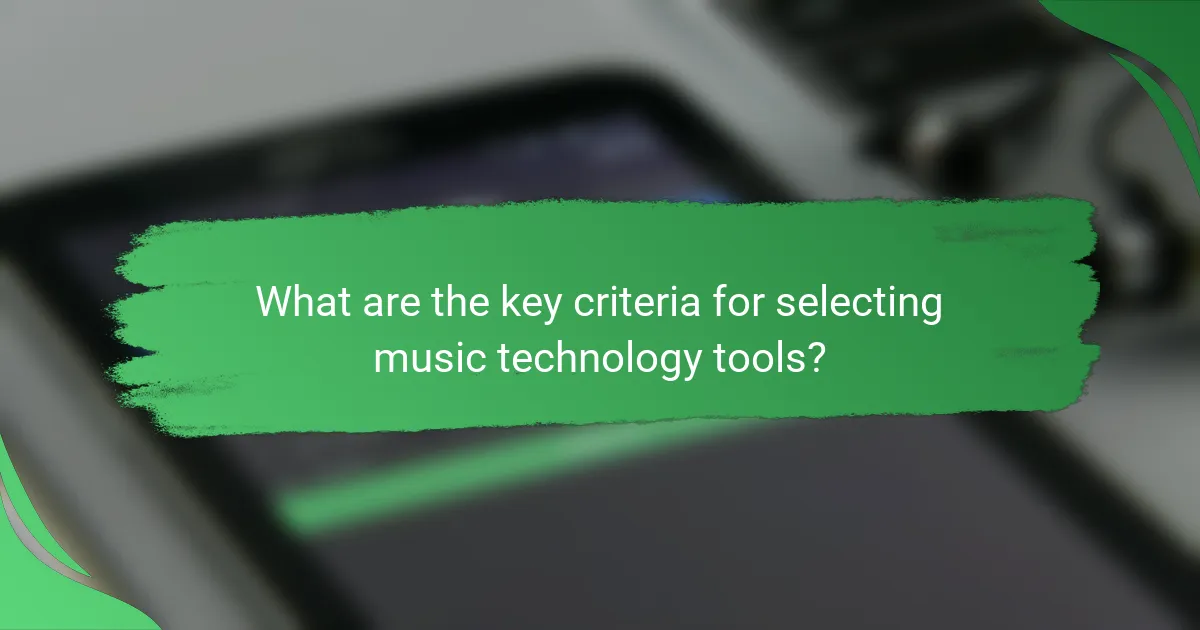
What are the key criteria for selecting music technology tools?
When selecting music technology tools, key criteria include compatibility with existing systems, user-friendly interfaces for creators, and cost-effectiveness for local artists. These factors ensure that the tools enhance creativity and productivity without causing unnecessary complications or financial strain.
Compatibility with existing systems
Compatibility with existing systems is crucial for seamless integration of new music technology tools. Tools should work well with current hardware and software setups to avoid disruptions in workflow. For instance, if a local studio uses specific digital audio workstations (DAWs), any new software should be compatible with those platforms to ensure a smooth transition.
Before purchasing, check for compatibility lists or user reviews that highlight integration experiences. This can save time and prevent frustration when setting up new tools.
User-friendly interfaces for creators
User-friendly interfaces are essential for creators to maximize their productivity and creativity. Tools with intuitive designs allow artists to focus on their music rather than struggling with complex functionalities. For example, software that features drag-and-drop capabilities or clear navigation menus can significantly enhance the user experience.
When evaluating tools, consider trying out demos or free trials to assess how easily you can navigate the interface. Prioritize tools that offer comprehensive tutorials or community support to help you get started quickly.
Cost-effectiveness for local artists
Cost-effectiveness is a major consideration for local artists, especially those operating on tight budgets. Look for tools that provide good value without sacrificing quality. Many software options offer tiered pricing models, allowing artists to choose plans that fit their financial situation.
Additionally, consider free or open-source alternatives that can deliver substantial functionality without the expense. Always weigh the long-term benefits against the initial costs to ensure that the investment aligns with your artistic goals.
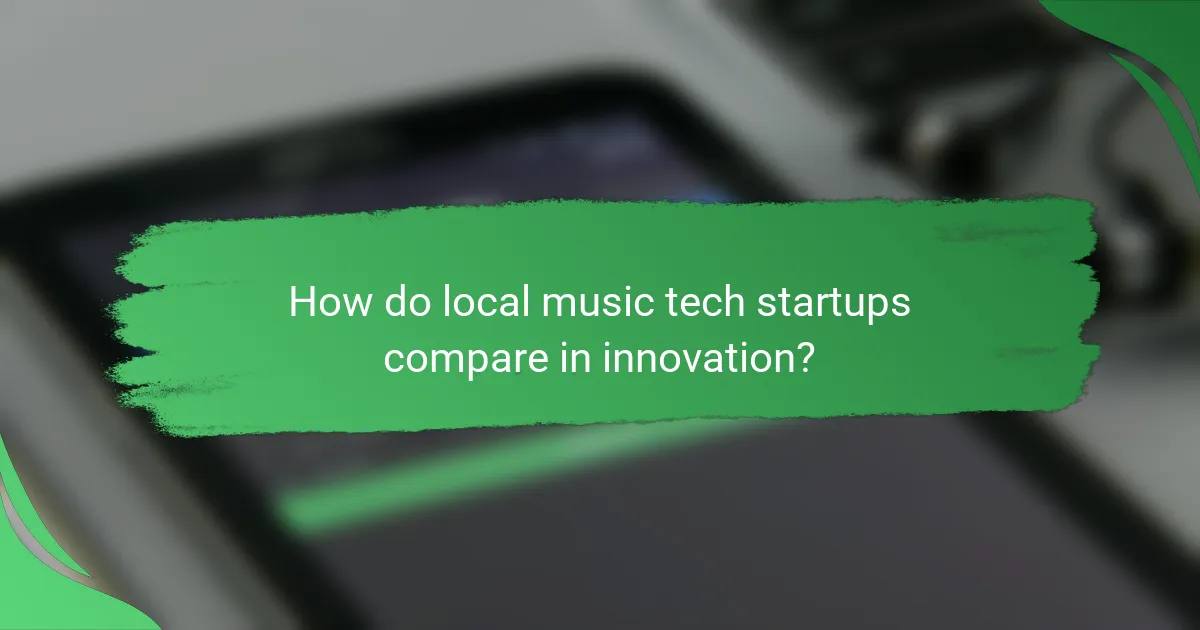
How do local music tech startups compare in innovation?
Local music tech startups often excel in innovation by addressing specific community needs and leveraging unique cultural elements. They tend to create tailored solutions that larger platforms may overlook, fostering a more engaged user base and enhancing local music scenes.
Comparison of platforms like BandLab and Splice
BandLab and Splice are popular platforms that offer cloud-based music creation and collaboration tools. BandLab focuses on social networking and community engagement, allowing users to share projects and collaborate easily. In contrast, Splice emphasizes a vast library of samples and loops, catering to producers looking for specific sounds.
While both platforms provide valuable resources, local startups may offer more personalized support and features that resonate with regional music styles. For instance, a startup might integrate local genres or instruments into their platform, enhancing relevance for users in that area.
Unique features of local startups
Local music tech startups often incorporate features that reflect their community’s culture and preferences. This could include tools for specific genres, localized music education resources, or partnerships with local artists and venues. Such features not only attract users but also create a sense of ownership and pride within the community.
Additionally, many local startups prioritize user feedback in their development process, allowing them to adapt quickly to changing needs. This responsiveness can lead to innovative solutions that larger companies may take longer to implement.
Success stories of community-driven initiatives
Community-driven initiatives have led to several successful local music tech startups that have made significant impacts. For example, a startup that connects local musicians with venues for live performances can boost both artist visibility and venue attendance. This symbiotic relationship fosters a vibrant local music scene.
Another success story involves a platform that offers affordable music production courses tailored to the local market, empowering aspiring musicians with the skills they need. Such initiatives not only enhance individual careers but also contribute to the overall growth of the local music industry.
